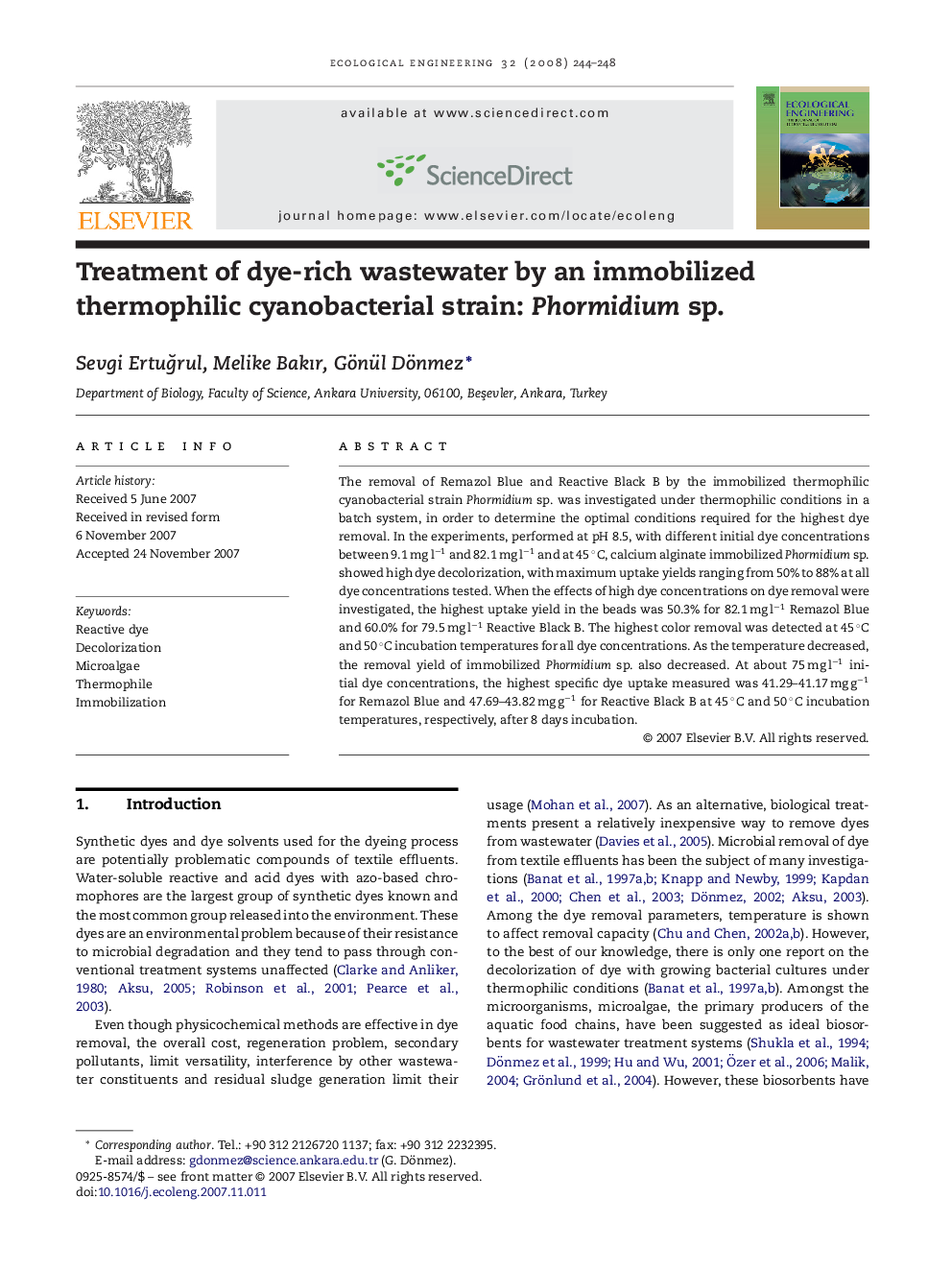| Article ID | Journal | Published Year | Pages | File Type |
|---|---|---|---|---|
| 4391004 | Ecological Engineering | 2008 | 5 Pages |
The removal of Remazol Blue and Reactive Black B by the immobilized thermophilic cyanobacterial strain Phormidium sp. was investigated under thermophilic conditions in a batch system, in order to determine the optimal conditions required for the highest dye removal. In the experiments, performed at pH 8.5, with different initial dye concentrations between 9.1 mg l−1 and 82.1 mg l−1 and at 45 °C, calcium alginate immobilized Phormidium sp. showed high dye decolorization, with maximum uptake yields ranging from 50% to 88% at all dye concentrations tested. When the effects of high dye concentrations on dye removal were investigated, the highest uptake yield in the beads was 50.3% for 82.1 mg l−1 Remazol Blue and 60.0% for 79.5 mg l−1 Reactive Black B. The highest color removal was detected at 45 °C and 50 °C incubation temperatures for all dye concentrations. As the temperature decreased, the removal yield of immobilized Phormidium sp. also decreased. At about 75 mg l−1 initial dye concentrations, the highest specific dye uptake measured was 41.29–41.17 mg g−1 for Remazol Blue and 47.69–43.82 mg g−1 for Reactive Black B at 45 °C and 50 °C incubation temperatures, respectively, after 8 days incubation.
